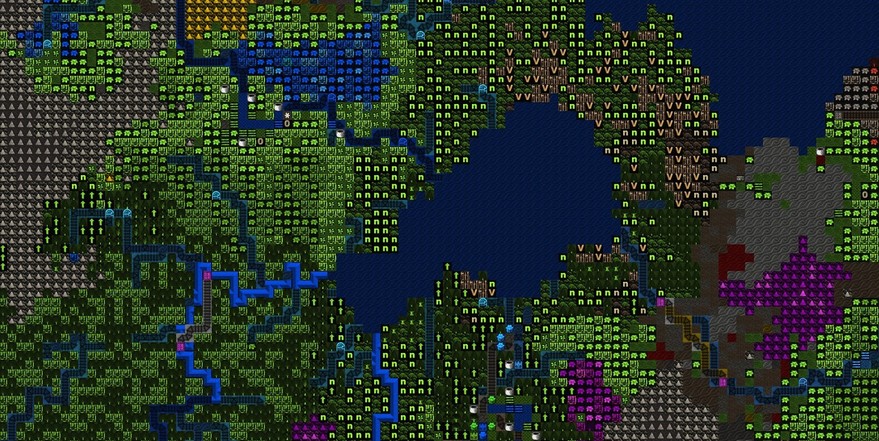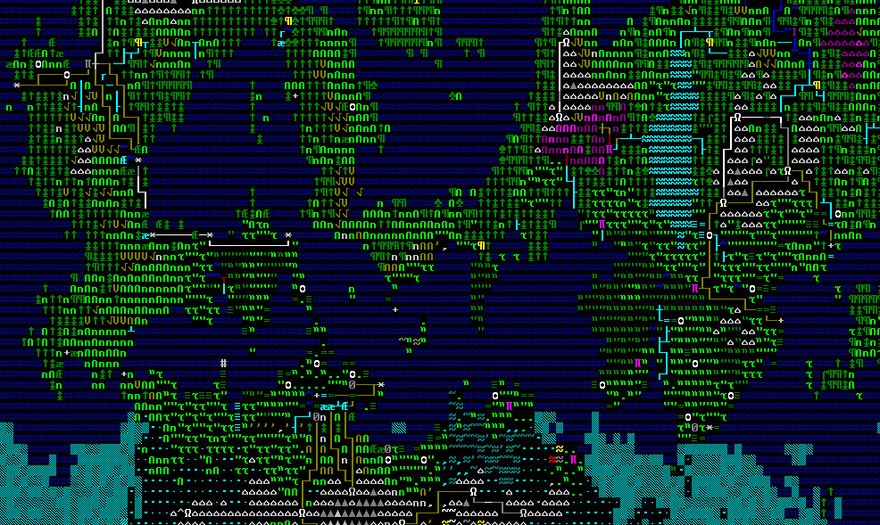Our Two5Six conference will be held May 16 in Brooklyn.
Including writing The Hobbit, it took J.R.R Tolkien about 14 years to write The Lord of the Rings trilogy. That doesn’t even count The Silmarillion, which his publisher didn’t initially want. What it does include is thousands of hours crafting, shaping, and sculpting a fantasy kingdom that is now world-renowned. In those 14 years Tolkien took a tale of a band of misfit dwarves and expanded it to create an epic that explored his vast fantasy world.
Dwarf Fortress can do that every time you start a new game.

Potentially, every single playthrough of Dwarf Fortress takes place in a fantasy world with a rich, detailed history that has been crafted that day with variables set by a player mere moments before. Or not: when you sit down with Dwarf Fortress you can continue in a persistent world, one that you’ve been to before, one which contains the ruins of your latest foray into the wilderness, one which still contains the scars of a mining operation or the devastation of the undead.
This world generation is what the game’s creator, Tarn Adams, told me via email that he believes is “probably the most striking” and unique aspect of the game and has remained so since the game’s 2006 release. He notes that, while there have been “plenty of games that can make maps,” he couldn’t “think of any other game before 2006 that tries to make a history.”
Adams’ description of the processes of world generation at first bring to mind the emergence present in Conway’s Game of Life, the 1970 zero-player game which simulates the creation of life. However, most of those similarities exist only on the surface. Whereas John Conway programmed very few rules from which much has been done, Adams made a system where a plethora of rules and algorithms informs how any particular instance will unfold.
After the game has generated plants and animals, it then decides where “good farmland or the best forests are, so it is able to place the fantasy races in places they’d like.” Once the game has done that, “it looks at the minerals, vegetation, and animals” and compares that to “civilization parameters and comes up with all the industrial, farming and trade goods that civilization is going to produce, and then goes through, week by week, simulating agriculture and craft production.” The game also needs to determine “how the civilizations spread—where they form roads and tunnels.” Little of this feels like the work of a mathematician. Instead, it feels as though it were crafted at a tavern by a cartographer, anthropologist, and historian.
Understanding that Dwarf Fortress is a game with—and about—history is key to understanding what makes Dwarf Fortress special. Games like SimCity are about managing systems and needs, much in the same way that Dwarf Fortress is about managing the needs and wants of the dwarves but games like SimCity are not games with history or, more importantly, “memory.” When you choose to call down a meteor to destroy your simulated city there is not the sense that this will have consequences. There’s no permanence. Dwarf Fortress remembers your failed endeavors—its mountains and hills bear witness to the methodical strength of the rivers which erode them, its meadows contain the ruins of your previous failures.

This is why, when I asked Adams about placing Dwarf Fortress in a lineage of games, he rebuked it. “I don’t see DF as a continuation of a lineage, aside from our own horrible string of fantasy games,” he said. Later, I realized what a stupid question this was. Of course it was not a continuation in any external lineage; Dwarf Fortress itself is the lineage of Dwarf Fortress. Not only is Dwarf Fortress continuously in development, it’s a game with an internal history defined almost entirely by itself.
A game like Rogue Legacy makes light of the fact that death happens fairly often in roguelikes, and the fact the player needs a new character every time they want to play again. (In it, every time you die you re-start as the previous player’s descendant.) However, those previous lives are as consequential as any previous run in an iOS “launcher” game, such as Learn to Fly or Burrito Bison, in which you fling things ad infinitum. Money is collected to upgrade, but what did it matter that your father was a colorblind mage?
This is also why the word “random” does not adequately describe the highly sophisticated processes at work in Dwarf Fortress. Though the player can choose to generate new worlds with new histories and new landscapes as often as they would like, there is very little which is truly random. The Adams sought to make a game which “surprised them” and in doing so created systems which simultaneously engaged with immersion and emergence. They made a game that surprised everyone and continues to surprise—though perhaps not always in ways that they intended. The code page 437 graphics are a series of letters and numbers and comprise almost all the graphical elements of the game. But they hide a complex and detailed system of wants, needs, causes, and effects which all play out on the screen.
Adams is not shy to admit that the complicated user interface is “one of the things we’re not doing well. The game only shows one cross-section of the active at a time … It has gotten to the point where many of our text symbols are ambiguous …(‘g’oat or ‘g’oblin?)” He also admits that sometimes important information “isn’t being conveyed at all or only comes across as a third-hand effect without clear causal links.”
This abstract interface requires the player to be part dwarf leader, detective, and anthropologist. Without clear causal links and because of the ambiguous nature of some of the elements, players must do more than simply play. It’s one of those unique flaws that causes the player to develop a special set of skills. It creates a deep tuning to the functions of the game, to the processes which are always behind the letters which make up the interface. It’s a barrier, sure, something Adams admits he chose in order to speed the development process, but it’s one that itself has developed a rabid fan base that, like Dark Souls devotees, understand that death is not the end. There will always be more ore to mine and more flagons to fill. Digital life goes on.
